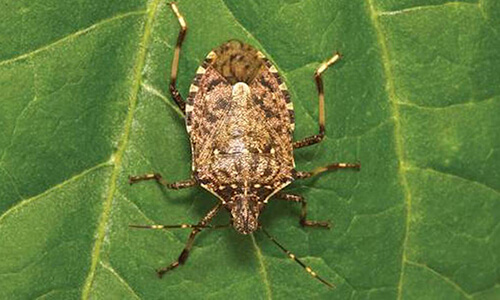
What do stink bugs look like?
Adult BMSBs are mottled greyish-brown in color and have six legs. Their body shape is a triangular shield and they are about ¾ of an inch long.
Where do stink bugs come from?
Stink bugs are a native of Asia and were accidentally introduced to the United States sometime in the late 1990s. Because there are no natural predators for stink bugs in the U.S., they have been able to spread rapidly to become a significant agricultural pest.
Why do they come indoors?
As the weather gets colder toward the end of summer and early fall, stink bugs begin searching for warm overwintering sites. This leads them to enter homes and other structures that could provide shelter. Stink bugs reemerge from their overwintering sites in early spring to become active once again. During warm months, they are frequently seen congregating en masse on the sides of buildings.
Are stink bugs dangerous?
Stink bugs aren’t known to bite humans or damage property, but caution should be used when handling them to avoid a release of their unpleasant odor. Their tendency to invade homes in high numbers can be quite a nuisance. Though they don’t pose a direct danger to people, stink bugs destroy crops and are a threat to the agricultural industry.
How do I prevent a stink bug infestation?
To prevent stink bugs from entering homes and buildings, seal all cracks around windows, doors, siding, utility pipes, outlets, behind chimneys and underneath the wood fascia and other openings. Be sure to use a high-quality silicone or silicone-latex caulk. Damaged screens on doors should be replaced to keep stink bugs out. It can also be beneficial to replace outdoor lighting with yellow bulbs, which are less attractive to stink bugs.




